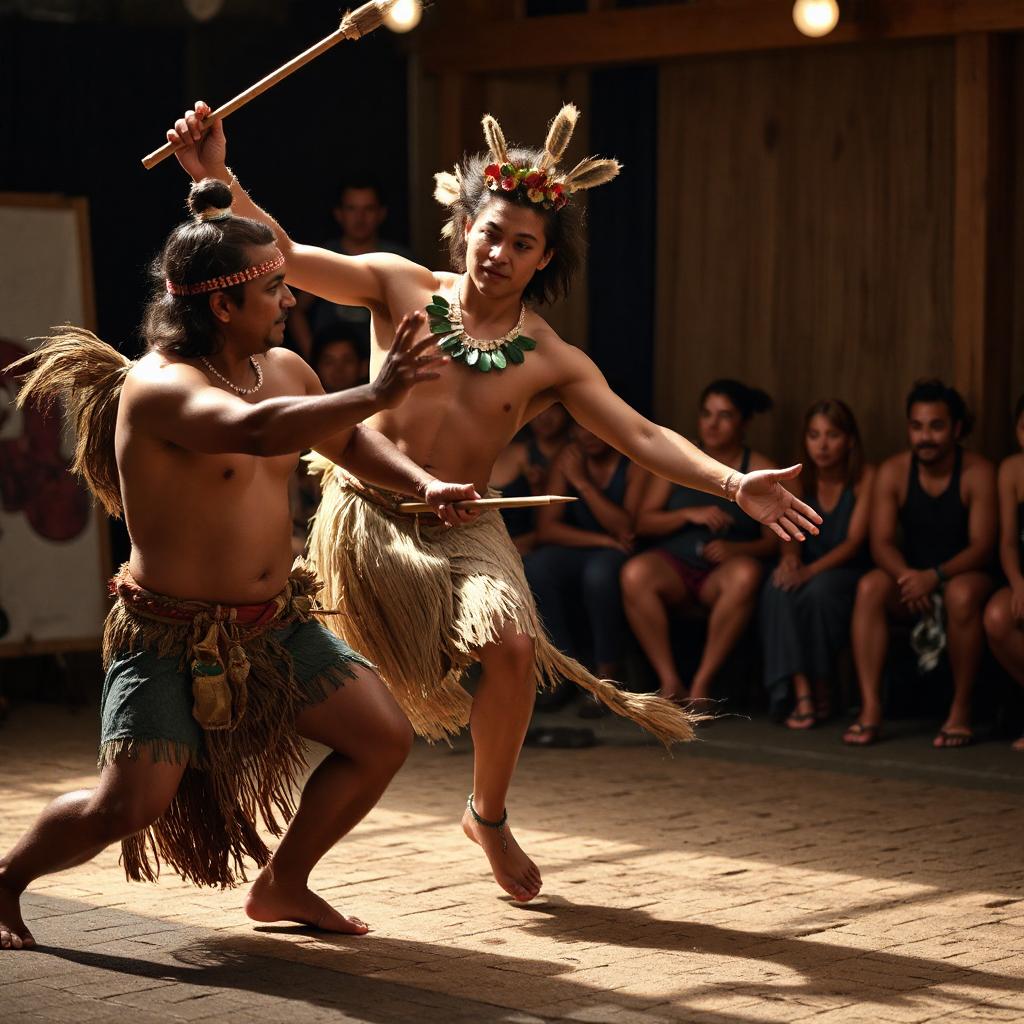Estimated Reading Time: 3 min
The Māori dance, known as “haka,” is a traditional war dance of the Māori people of New Zealand. It is characterized by vigorous movements, rhythmic chanting, and facial expressions that convey strength and unity. Here are some key aspects of the haka and its significance:
Types of Haka:
- War Haka: Historically performed by warriors before battle to intimidate opponents and prepare mentally for combat. This type typically involves fierce facial expressions and aggressive movements.
- Ceremonial Haka: Used during important events such as weddings, funerals, or welcoming guests. These haka often focus on celebration and respect.
- Cultural Haka: Performed by Māori groups to express cultural identity and pride. This type may include storytelling through movement and song.
Elements of the Haka:
- Chanting (Waiata): The haka is accompanied by powerful chants that convey messages, histories, or emotions. The words often honor ancestors or express community values.
- Body Movements: The dance includes strong foot stomping, hand gestures, and full-body movements. These actions are designed to show strength and unity among participants.
- Facial Expressions: Participants use facial expressions, such as wide eyes and sticking out tongues, to intimidate and convey emotion. This aspect is integral to the performance.
- Posture and Formation: The haka is typically performed in a group, with participants standing shoulder to shoulder. The formation enhances the sense of community and collective strength.
- Identity and Heritage: The haka is a vital part of Māori culture and identity, connecting performers to their ancestors and traditions.
- Community and Unity: The group performance fosters a sense of belonging and solidarity among participants, reinforcing social bonds within the community.
- Welcoming Guests: The haka is often performed to welcome guests, showcasing hospitality and respect for visitors. This is common during significant ceremonies or events.
- Sporting Events: In modern times, the haka has gained international recognition through its performance by New Zealand’s national rugby team, the All Blacks, before matches. This has helped promote Māori culture on a global stage.
Learning and Participation:
Many Māori communities and cultural organizations offer opportunities to learn about the haka, including workshops and performances. Engaging with this dance can provide deeper insights into Māori culture and values.
In summary, the haka is not just a dance; it is a rich cultural expression that embodies the history, identity, and values of the Māori people. Its powerful movements and chants continue to resonate both within New Zealand and around the world.

